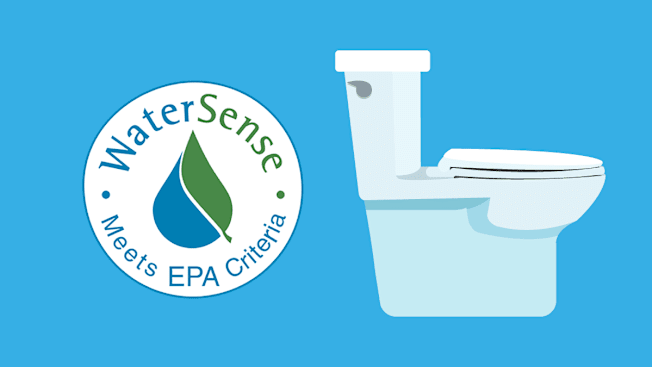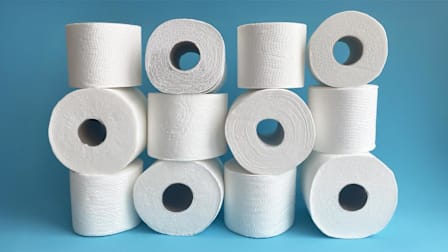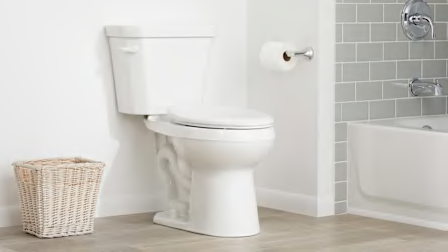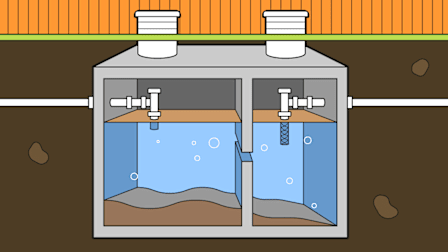Busting Myths About Water-Efficient Toilets
Do low-flow toilets force you to flush multiple times? Not according to CR's tests.
When you shop through retailer links on our site, we may earn affiliate commissions. 100% of the fees we collect are used to support our nonprofit mission. Learn more.

The toilet is the single-largest source of water consumption in your home, surpassing the shower, the dishwasher, and the washing machine. So it makes sense to shop for a water-efficient model, despite concerns you may have about the effectiveness of the low-flow approach.
We know because we rigorously evaluate toilets in our labs—and have for decades. (CR members in the market for a new model can browse our toilet ratings, and you don’t need to be a member to access our toilet buying guide.)
The test results show that a water-efficient toilet doesn’t require any sacrifice in performance or price. In fact, it can end up saving you money.
Myth: Low-Flow Toilets Are Inferior
Fact: Many ace CR’s lab tests.
Nearly all of the 58 toilets in CR’s current ratings use 1.28 gallons per flush or less, meeting the EPA’s strict WaterSense designation. And most stand up to CR’s rigorous lab testing.
To evaluate toilets, CR’s technicians flush varying volumes of clog-worthy items down their drains—from plastic balls to soaked sponges to water-filled latex condoms. The toilets that perform best send simulated waste down in one flush and leave little residue on the front or sides of the bowl.
While some toilets outperform others, most of the models in our ratings demonstrate very good to excellent performance when it comes to solid waste removal—and the differences in score don’t correspond to how much water they use.
Dual-flush toilets, which offer both high- and low-water flush options, use even less water in their low-volume setting (for liquid waste), allowing you to save even more without fretting about clogs. The Gerber Viper and Glacier Bay models below are the highest-rated single- and dual-flush models in our ratings. Both are WaterSense certified.
Myth: You Have to Flush a Low-Flow Toilet Multiple Times
Fact: Usually, one flush does it.
Many toilets in our ratings, including low-flow models, can remove simulated solid waste in just one flush. That’s because water isn’t the only factor when it comes to effective flushing—or what sets apart good and poor performers.
Other design elements matter more—like whether the toilet relies purely on gravity or is pressure-assisted, the direction and force of the water that jets into the bowl, and even the shape of the bowl.
It’s important to note, too, that using too much toilet paper can cause even a high-performing toilet to clog. "Anyone trying to flush half a roll of toilet paper down at once is going to have an issue," Halevah says. (If you do experience a clog, don’t just flush repeatedly. Turn to a plunger, a bowl or enzyme cleaner, or when all else fails, a plumber, our experts say.)
Myth: Low-Flow Toilets Are Expensive
Fact: Not really.
Water-efficient models range widely in price. The least expensive single- or dual-flush option in our ratings—the $94 Glacier Bay N2428RB—flushes with the same 1.28 gallons as the most expensive, the Gerber Ultra Flush UL-20-302, $600. Rest assured: You can easily find well-rated, efficient models like the ones listed below for less than $200.
There are big price differences in toilets, however. If you want a dual-flush model, a luxurious-looking throne from a well-regarded brand, or even a wall-mounted setup, you’ll likely pay more. On it’s own, though, water efficiency doesn’t cost you more.
And a new toilet can save you money in the long term. Upgrade from an older, inefficient toilet to a WaterSense certified model and you can save an estimated $170 per year on your water bill, according to the EPA. That’s roughly $3,400 over the lifetime of the toilet. And if every older toilet in the country were replaced with a higher-efficiency model, the U.S. would save 260 billion gallons of water per year—equivalent to the water used in 16.25 billion showers.
@consumerreports We flushed plastic balls, sponges, and water-filled condoms to identify the toilets that don’t clog. Tap the link in our bio to see the best of the best. #toilets #hometok #producttesting
♬ original sound - Consumer Reports
































